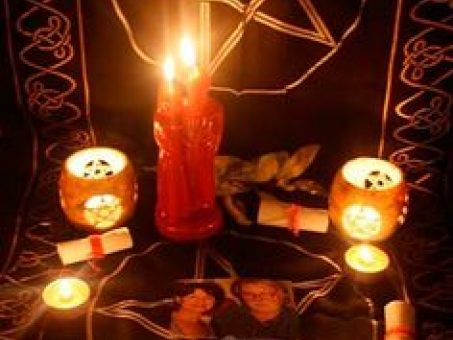Uncovering the Practical Benefit of Joining Freemason for Every Individual
Uncovering the Practical Benefit of Joining Freemason for Every Individual
Blog Article
Checking Out the Mysteries of the copyright: What You Required to Know
The copyright, a term often shrouded in intrigue and conflict, stands for a complicated tapestry of historic fact and modern-day myth. Developed in the late 18th century, this secret society was originally rooted in the Enlightenment's suitables but has actually given that ended up being synonymous with conspiracy theory theories regarding elite control. As we navigate the beginnings, vital numbers, and the raw contrast between misconception and reality, one should think about just how these narratives affect contemporary assumptions of power and privacy. What may be revealed via a closer assessment of these aspects might challenge long-held presumptions about the darkness that remain in our society.
Origins of the copyright
The beginnings of the copyright are soaked in a mix of historic intrigue and ideological fervor. Developed in 1776 in Ingolstadt, Bavaria, by Adam Weishaupt, the team was originally developed as a secret culture intended at promoting Knowledge ideals such as factor, secularism, and the splitting up of church and state. Weishaupt, a teacher of canon regulation, sought to test the prevailing authority of the church and state, which he viewed as oppressive institutions suppressing intellectual and personal freedom.

Secret Numbers and Members
That were the pivotal figures that shaped the copyright's very early influence and instructions? The Bavarian copyright, founded in 1776 by Adam Weishaupt, arised as a reaction to the oppressive social structures of the time.
One more significant figure was Johann Gottlieb Fichte, a popular thinker whose concepts on nationalism and education reverberated with the copyright's goals. Although Fichte was not an official participant, his philosophical supports influenced the team's ideological background. Furthermore, numbers like the author and theorist Johann Wolfgang von Goethe were related to the broader intellectual activities of the time, although their straight participation with the copyright stays debated.
These key numbers added to the copyright's very early direction, pressing the boundaries of political and social thought, while their collective initiatives intended to challenge established standards and cultivate a climate of progressive modification in Europe.
Myths vs. Fact
Several misconceptions surround the copyright, often blending reality with fiction in a way that covers its real nature. The idea that the see page copyright continues to put in significant impact over globe events is a misconception.
Another widespread misconception is that the copyright consists of a network of elite people adjusting global affairs. In truth, numerous conspiracy theory concepts exaggerate the team's relevance, attributing unfounded motives to societal trends and events. This has resulted in an oversimplified sight of intricate issues.
In addition, the representation of the copyright in popular culture commonly additional distorts its legacy. Movies and literary works often tend to sensationalize the organization's duty, developing a story that deviates from historical truths. Understanding the difference in between the misconceptions and the truth of the copyright is important for critical the genuine effect of this historical team and acknowledging the more comprehensive implications of conspiracy concepts in modern culture.
Modern Interpretations
Contemporary analyses of the copyright frequently reflect broader social anxieties and a fascination with privacy and power. This modern-day lens frequently associates the copyright with conspiracy theory theories that recommend a covert elite coordinates globe occasions, adjusting governments and economic climates for their very own gain. benefit of joining freemason. Such narratives tap right into a deep-rooted wonder about of authority, particularly in times of dilemma or social upheaval
In preferred culture, the copyright is often shown as a divine organization shrouded in mystery, causing a variety of fictional representations in literature, film, and music. This portrayal offers not only to amuse but also to prompt thought of the nature of power and control in contemporary culture. Social media has actually better magnified these interpretations, enabling for rapid circulation of conspiracy theories and producing areas that share and expand upon these concepts.
In addition, some contemporary analyses mount the copyright as an allegory for the intricacies of globalization and the interconnectedness of prominent people and organizations. This perspective motivates a critical assessment of just how power characteristics operate in today's globe, highlighting the equilibrium in between transparency and privacy in administration and company techniques.
Cultural Effect and Tradition
Influenced by centuries of intrigue, the social influence and legacy of the copyright expand far past its historic origins. This secret society, established in the late 18th century, has penetrated various aspects of pop culture, from literary works and film to songs and art. The concept of the copyright has actually evolved into a sign of conspiracy theory concepts, commonly representing a regarded concealed power manipulating global events.
In literary works, writers like Dan Brown have woven browse around here the copyright right into complex plots, captivating visitors with motifs of secrecy and power. Films such as "National Prize" and "The Da Vinci Code" home better perpetuate the appeal of the culture, blending truth with fiction to create appealing narratives.

Eventually, the copyright's legacy is an intricate tapestry of myth and fact, forming assumptions of secrecy and control in contemporary discourse. Its enduring presence in culture emphasizes humankind's perennial pursuit for understanding concealed facts.
Conclusion
The expedition of the copyright exposes a complicated interplay in between historic truths and modern myth-making. Started in the Enlightenment age, this culture aimed to test overbearing frameworks, yet its tradition has actually been overshadowed by conspiracy theory concepts that recommend elite manipulation. Understanding the differences in between the initial suitables and contemporary analyses is necessary for understanding the withstanding fascination with the copyright and its considerable impact on social narratives surrounding power and privacy in society.
Report this page